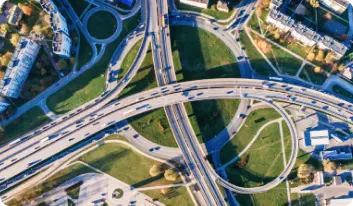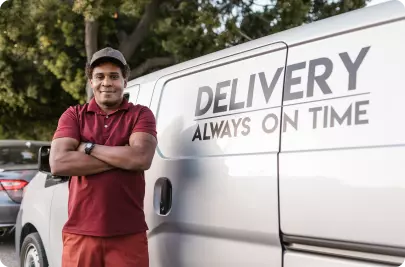
It’s widely accepted at this point that remote connectivity is essential in managing a modern fleet of vehicles. Primarily, this comes into play with regard to GPS tracking and route optimization. Today, there are programs that can help management to easily track vehicles, communicate with drivers regarding route changes, and gather data related to driving time and delivery efficiency. Even with all of this becoming increasingly normal practice, however, ongoing advances in technology are poised to make remote connectivity even more important in fleet management.
One of those advances relates in a sense to the very idea of wireless connectivity. As you may well have read by now, 5G networks are emerging, and bringing with them a big boost in speed and responsiveness. This may not mean that we see a definitive change on a given day, when we suddenly leap forward into an era of better wireless connections. Over the course of this and next year however, 5G networks are expected to spread, and they will only make it easier for the technology in fleet vehicles to communicate seamlessly with company systems, essentially performing as IoT (internet of things) devices.
Other advances of note concern hardware, and specifically the electronic capability of some of the technology we now outfit fleet vehicles with. Many of the relevant devices, small as they may be, still depend on the printed circuit boards that have long been necessary in electronics. Because the devices need to be small and adaptable, however — while retaining wireless power — new designs have had to be crafted. Because of these needs, in fleet-related tech and elsewhere, we’ve seen improvement in PCB antennae, so much so that they can be as compact and as powerful as they need to be. This has meant the emergence of a range of different types of sensors that can be used in fleet tracking, and which are fully capable of sending wireless signals (including on the coming 5G networks).
Given all of this, it certainly looks as if wireless connectivity is only going to play a bigger role in how fleets are managed moving forward. GPS tracking and route optimization are the most prominent applications, but there are already several other ways in which IoT-connected sensors can help improve fleet performance.
1 - Tracking Shipped Assets
IoT sensors can actually be attached to shipped assets, rather than vehicles themselves. This is something that some businesses are already beginning to do, and it enables for even greater visibility of product shipments. Tracking a vehicle certainly provides insight regarding delivery times and inventory movement. But tracking the actual products can expand that insight and further ensure that deliveries occur as intended.
2 - Maintaining Vehicle Quality
As we’ve discussed in the past, fleet maintenance is critical for a delivery business, and this can be true no matter how large or small said business may be. In the simplest terms, a vehicle that breaks down or performs poorly can slow down deliveries, lead to unnecessary costs, and even make drivers less safe. And now, IoT sensors can play a role in avoiding these problems by monitoring engine performance, tracking tire and brake quality, timing oil changes, and so on.
3 - Conserving Fuel
To some extent this point actually ties right in with fleet routing software. Generally, the most efficient route will also be one that helps to conserve fuel. However, sensors that are tied to vehicle activity can also help to provide management with more comprehensive pictures of driver habits and vehicle idle time. This information can potentially be put to use in the form of instruction that will change habits and lead to less wasted fuel.
4 - Monitoring Driver Performance
Driver performance is another crucial area that can benefit from modern fleet vehicle sensors. It’s widely known that fleet drivers are often overtired and overworked, and unfortunately this can lead to significant safety issues — both for them and for others on the road with them. Responsible fleet managers will already be working to avoid these problems and keep their drivers safe. But sensors mean to monitor performance (by detecting sudden stops and starts, speeding, indications of tired or impaired driving, etc.) can make it easier to spot problems and make the necessary changes.
Through all of these efforts and more, connected sensors can help modern shipping fleets to be safer, more responsible, and more efficient all at once.
Frequently Asked Questions
Related articles
Liked this article? See below for more recommended reading!

What is Vehicle Fleet Management?

6 Ways Your Delivery Fleet Can Lower Its Carbon Footprint



